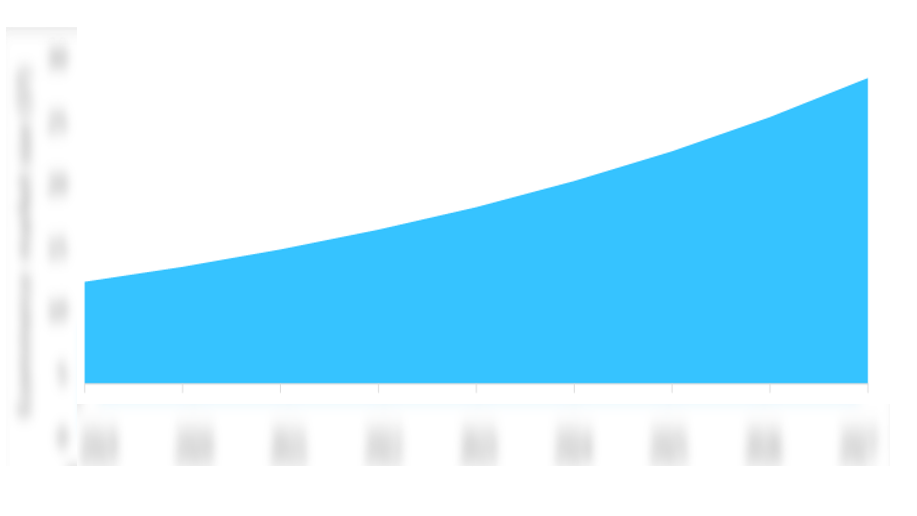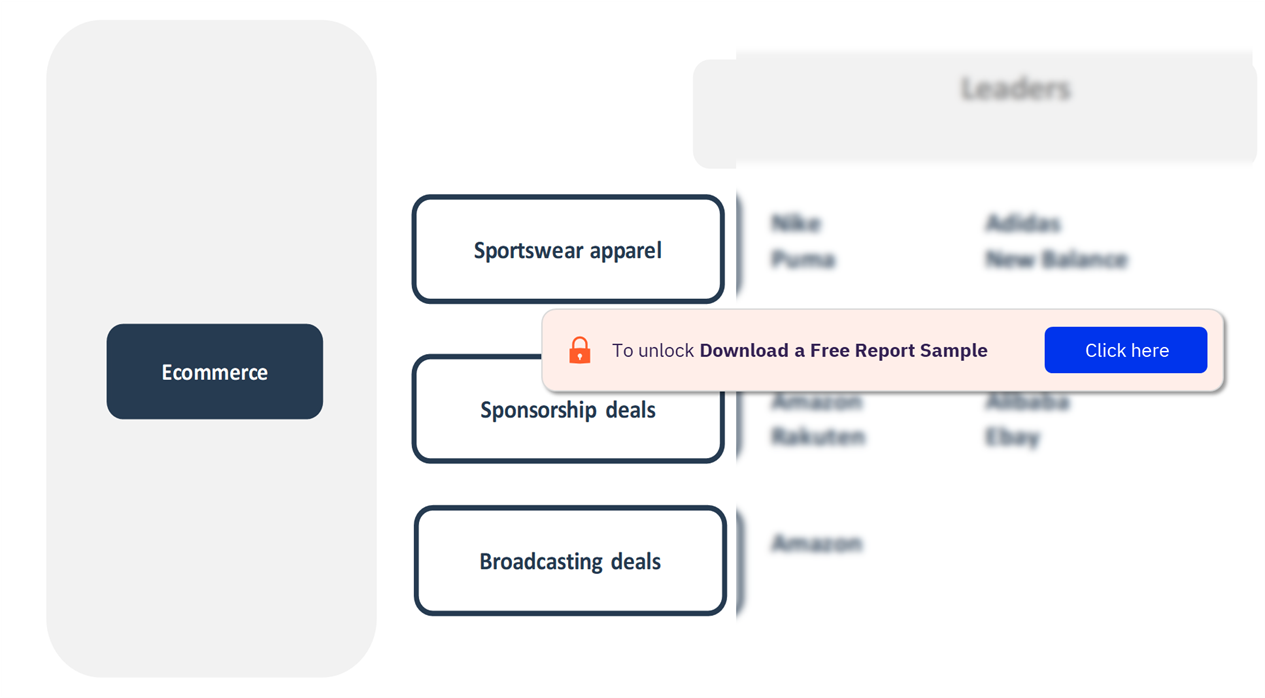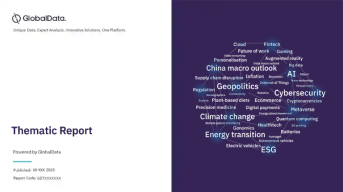Ecommerce in Sport – Thematic Intelligence
Powered by ![]()
All the vital news, analysis, and commentary curated by our industry experts.
Ecommerce in Sport Report Overview
E-commerce has witnessed a significant rise in the past few years due to the growth of the internet. Online shopping has become popular due to its convenience and ease, with people not even needing to leave their houses to purchase goods. Improved delivery speeds have also led to more people adopting these services. For instance, Amazon’s Prime one-day delivery has become highly popular among consumers. The enormous growth of e-commerce companies in the last two decades has correlated strongly with its rising presence within sport. As these companies have grown, they have become more capable of striking higher-value deals with larger sports teams and leagues. Brands such as Nike, Adidas, Puma, and New Balance have built up their brands by securing endorsement deals with some of the world’s biggest athletes.
Furthermore, Amazon is the only example of an e-commerce company successfully breaking into the area of sports streaming. Its enormous wealth has allowed it to acquire valuable sports rights for sizable sums to boost traffic and subscriber count to its streaming platform. Leagues that have partnered with Amazon include the NFL and the Premier League, both of which signed multi-year deals.
The e-commerce in sport thematic research report offers a comprehensive understanding and thematic briefing about the adoption of e-commerce in the sports sector. The report also covers key trends influencing the market and sport industry analysis. Furthermore, the e-commerce in sport industry research report provides information on the value chain components and key companies involved in the sector.
| Market Size (2023) | $20 trillion |
| CAGR (2023-2027) | >13% |
| Key Trends | Technical Difficulties, Rise of Streaming, International Markets, Virtual Reality, Ethics, Third-party Sellers, Women’s Sport, and Social Justice |
| Key Value Chain Components | Sportswear Apparel, Sponsorship Deals, and Broadcasting Deals |
| Key Public Companies | Adidas, Amazon, Alibaba, New Balance, Puma, and Nike |
For more insights on e-commerce in sport scope and market forecasts, download a free sample report
E-commerce in Sport Trends
Some of the key trends likely to influence e-commerce in sport theme are technical difficulties, the rise of streaming, international markets, virtual reality, ethics, third-party sellers, women’s sport, and social justice.
Rise of Streaming: For years, sporting events were exclusively tied to cable subscriptions, and OTT platforms were not even a part of the conversation. However, the popularity of the latter has soared in recent years, with an estimated 1.2 million people in the US dropping their traditional TV services in Q2 2020. Amazon was the first tech giant to have invested in sports streaming, with Netflix having ruled itself out of live sports, Google’s focus on YouTube Premium, and Facebook not having an OTT platform at that time.
Women’s Sport: The popularity of women’s sports has been increasing rapidly in recent years, driven by athletes becoming more popular on social media, as well as more accessible TV coverage. While companies like Nike have announced their intent to focus more on the women’s market in recent years, they have also come under fire for the treatment of some of their female athletes.
For more information on h e-commerce in sport trends, download a free sample report
E-commerce in Sport Industry Analysis
The e-commerce industry is estimated to grow at a market size of $20 trillion in 2023, mainly due to increased smartphone usage and accessibility to online shopping. In addition, faster browsing speeds due to increased connectivity, as well as the ongoing development of 4G/5G, will aid the increasing number of smartphone users in different markets looking to do more online shopping. The number of businesses and start-ups in smaller markets (including India and South Africa) is also likely to drive financial growth, resulting the e-commerce industry growing at a CAGR of more than 13% during 2023-2027.
E-commerce in Sport Industry Overview
For more insights on the e-commerce in sport industry analysis, download a free sample report
E-commerce in Sport Value Chain Components
The e-commerce in sports value chain highlights the major ways that e-commerce companies generate value and revenues in the sporting world, and how they differ. The key e-commerce in sport value chain components include sportswear apparel, sponsorship deals, and broadcasting deals.
Sportswear Apparel: Nike, Adidas, Puma, and New Balance continue to pave the way in the sportswear apparel industry. Although each brand has expanded to provide a wide array of sportswear, the primary way these brands make money is through sports shoes and trainers for consumers. Nike has gained a competitive edge in its approach by aggressively pursuing endorsement deals with world-famous athletes to generate greater visibility and awareness of its brand, while the other companies have remained more consumer-based, although all four have made significant inroads into the sports sponsorship market through kit supplier deals and athlete endorsement deals.
E-commerce in Sport Value Chain Analysis
For more insights on the e-commerce in sport value chain analysis, download a free sample report
E-commerce in Sport – Competitive Landscape
The leading companies associated with e-commerce in sport theme are Adidas, Amazon, Alibaba, New Balance, Puma, and Nike.
Adidas: Trailing only Nike, Adidas has developed into one of the most profitable sportswear brands on the planet, generating over $25 billion in revenue in 2021. It has held many significant sponsorship deals within sports such as soccer and basketball, including with Lionel Messi, Zinedine Zidane, Kaka, James Harden, and Tim Duncan, among others.
To know more about leading companies in the e-commerce in sport theme, download a free sample report
Scope
- This report provides an overview of the history of e-commerce in sport, and how the industry has developed in the previous decades.
- It identifies the key trends within the e-commerce industry, and the challenges that the sector faces going forward.
- A look at the dominance of Nike and A didas within the sector, and how they have established so much success in the sportswear apparel industry.
- A detailed look at the e-commerce in sport value chain, and who the dominant leaders are within the sector.
Key Highlights
Platforms such as Nike and Adidas have grown their brands in recent decades to become some of the biggest names in the business. They are among the largest providers of sporting goods and equipment for consumers, with Nike being the world’s largest supplier of athletic shoes, while Adidas is the largest sportswear manufacturer in Europe, only trailing Nike globally. In 2021 alone, Nike made a profit of $44.5 billion while Adidas generated revenues of $25 billion, which dwarfs any other company in the market by a very significant margin. Adidas comfortably dwarfs the smaller to medium-sized companies in the market but is subsequently dwarfed by Nike, which can spend money that no other company in the space can.
Amazon made another significant breakthrough in the streaming business by securing the UEFA Champions League in the UK and will share coverage with BT Sport. From the 2024/25 season onwards, Amazon will broadcast the major Tuesday night games all the way through to the semi-finals, which will account for around 20 games in total. BT, which has held the rights since 2015, will continue broadcasting the rest of the competition’s games, as well as the other European club competitions including the UEFA Europa League and the UEFA Conference League. The move highlights Amazon’s growing strength in the streaming market, especially given that it has secured rights to the most prestigious club competition in European soccer.
The ecommerce market is expected to grow to a market value of $20.7 trillion by 2025, due to factors including increased smartphone usage and accessibility to online shopping. Faster browsing speeds due to increased connectivity, as well as the ongoing development of 4G/5G, will aid the increasing number of smartphone users in different markets looking to do more online shopping. The number of businesses and startups in smaller markets (including India and South Africa) is also likely to drive financial growth.
Online shopping is a desirable option for a business due to less expenditure on infrastructure while allowing a greater reach due to the globality of the internet. This global exposure allows for an increase in the global profile of the business, which naturally increases the number of consumers. Additionally, there are now more online marketing tools than ever due to the nature of online ads, as well as companies such as Google and Facebook tailoring their ads to users’ search histories.
More than 50% of Amazon’s sales come from independent sellers who pay a commission on each sale. However, before Nike’s agreement with Amazon, most Nike products being sold on Amazon were counterfeit or ‘gray-market’ goods. The latter refers to products that are made by the official brand but sold through unofficial channels. While the agreement was made based on the idea of fighting the counterfeit market, as well as eliminating third-party sellers to reroute more funds to Nike, the brand learned that this market is almost impossible to stop or regulate in any kind of stringent fashion. The network of online counterfeit sellers is too significant and complex for one company to be able to stop. Even when unsanctioned sellers were banned and taken down, they reappeared under different names. Additionally, Nike’s pages struggled to gain more favorable reviews from consumers due to price points, so official Nike products were harder to find than the unofficial versions.
Reasons to Buy
- For those wanting an in-depth analysis of current state of play in sporting e-commerce industry.
- Discusses the way e-commerce has grown in stature, and has interwoven itself into larger societal issues such as social justice.
- GlobalData’s thematic research ecosystem is a single, integrated global research platform that provides an easy-to-use framework for tracking all themes across all companies in all sectors. It has a proven track record of identifying the important themes early, enabling companies to make the right investments ahead of the competition, and secure that all-important competitive advantage.
Amazon
Alibaba
New Balance
Nike
Puma
NBA
NFL
IOC
Table of Contents
Frequently asked questions
-
What will be the e-commerce market size in 2023?
The e-commerce market size in 2023 is estimated to be $20 trillion in 2023.
-
What will be the e-commerce market CAGR during 2023-2027?
The industry is set to increase at a CAGR of more than 13% during 2023-2027
-
Which are the key trends in the e-commerce in sport market?
Technical difficulties, rise of streaming, international markets, virtual reality, ethics, third-party sellers, women’s sport, and social justice are the main trends in the e-commerce market.
-
Who are the leading players in the e-commerce in sport market?
Adidas, Amazon, Alibaba, New Balance, Puma, and Nike are the leading players in the e-commerce in sport market.
-
What are the key value chain components in the e-commerce in sport theme?
Sportswear apparel, sponsorship deals, and broadcasting deals are the main value chain components in the e-commerce in sport theme.
Get in touch to find out about multi-purchase discounts
reportstore@globaldata.com
Tel +44 20 7947 2745
Every customer’s requirement is unique. With over 220,000 construction projects tracked, we can create a tailored dataset for you based on the types of projects you are looking for. Please get in touch with your specific requirements and we can send you a quote.










